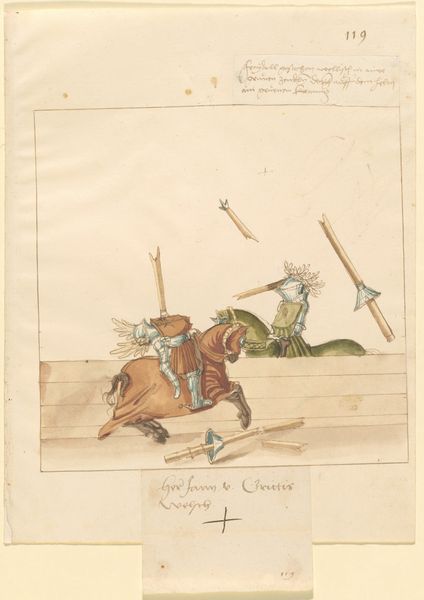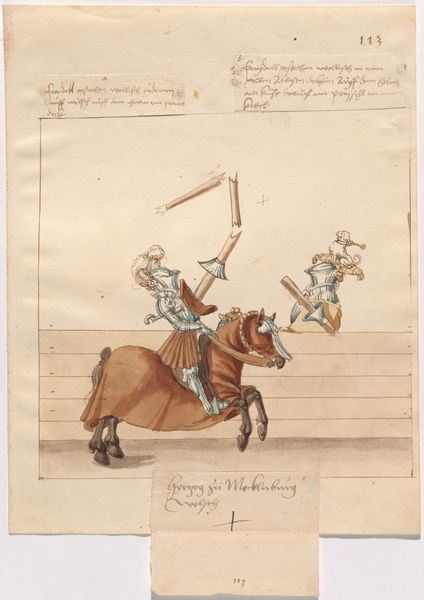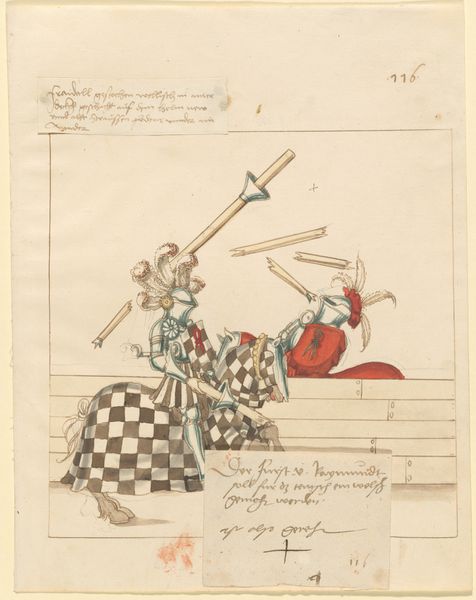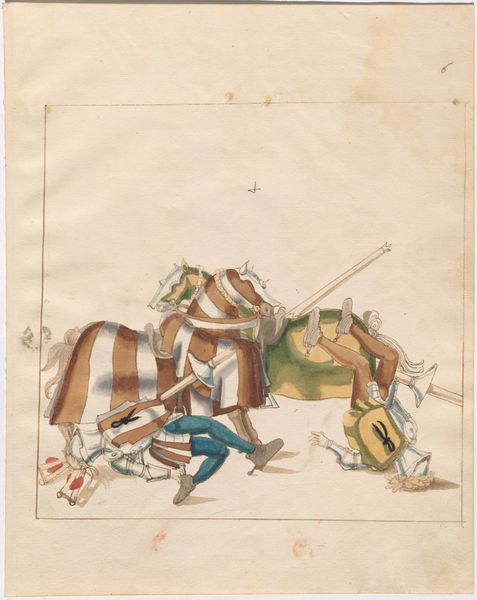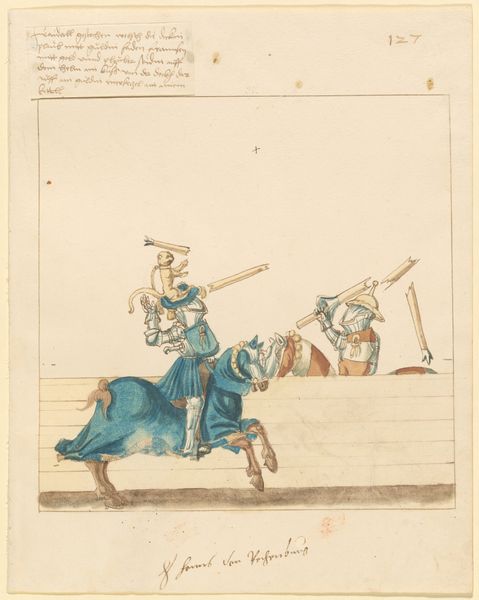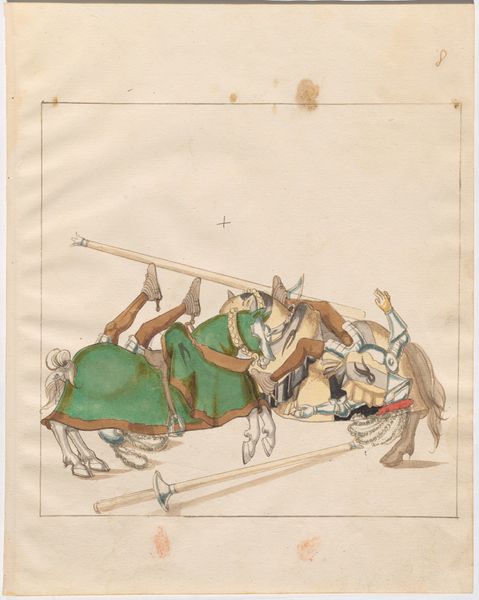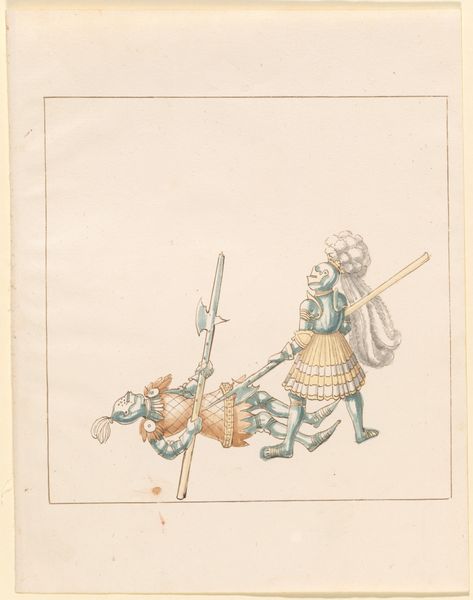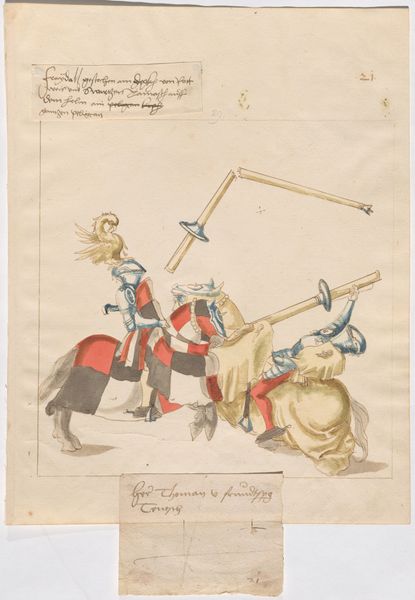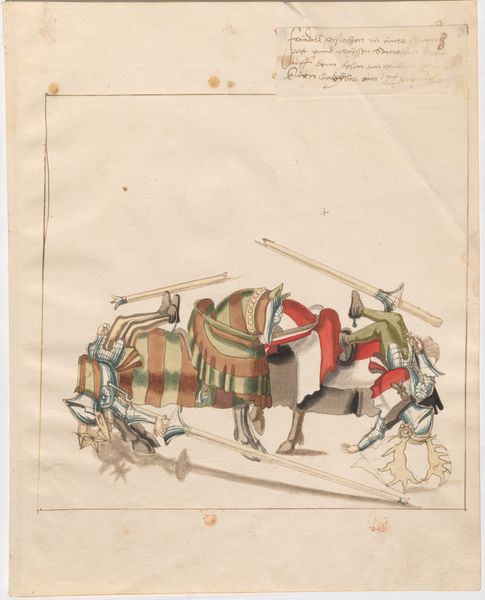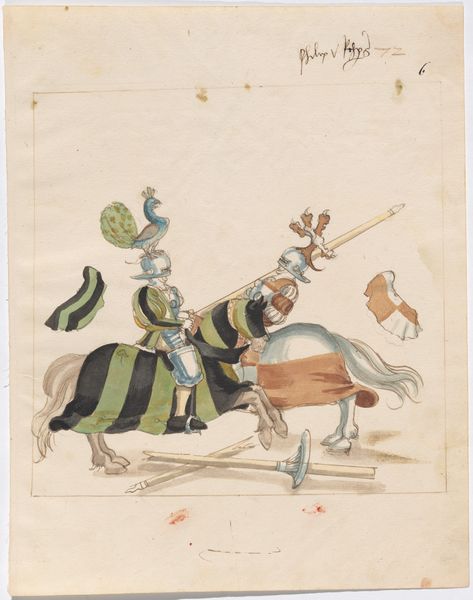
drawing, watercolor
#
drawing
#
narrative-art
#
figuration
#
watercolor
#
history-painting
#
italian-renaissance
Dimensions: sheet: 34.2 × 26.5 cm (13 7/16 × 10 7/16 in.)
Copyright: National Gallery of Art: CC0 1.0
Editor: This drawing, "Italian Joust of Peace," from around 1512 to 1515, is rendered in watercolor. The chaotic energy of the scene is striking – a knight tumbling from his horse during a joust. What historical insights can we draw from this image? Curator: It offers a glimpse into the spectacle and performance of power during the Renaissance. Jousts weren't simply sporting events. They were carefully orchestrated displays of wealth, skill, and social status. This image, showing a moment of defeat, could be read as a cautionary tale or even satire, questioning the idealized image of chivalry that these events projected. How do you interpret the breaking lances, so prominently displayed? Editor: I see them as emphasizing the violence inherent in these supposedly 'peaceful' jousts, maybe highlighting the risk beneath the pageantry. Was this meant for a private audience or wider distribution? Curator: The presence of the script in the upper-left suggests it was part of a larger document, perhaps a book detailing tournaments or courtly life intended for an aristocratic readership. The image functions within a visual culture where nobility consume images and emulate behaviors of social status, so it could be either a record, a glorification, or potentially even a critique depending on the context of the rest of the book. Does that reading shift your perception of the image? Editor: Definitely! Thinking about the intended audience and potential commentary embedded within it adds layers to the drawing that I initially missed. Curator: Exactly. Art of this period wasn't simply about aesthetics. It was deeply embedded in social structures, power dynamics, and the political agendas of its patrons. Studying these works illuminates how these structures influenced both the creation and reception of images. Editor: I’ll remember to consider that power dynamic in other art too, as well as considering its intended audience and context to reveal the potential intended function. Thanks for the insight.
Comments
No comments
Be the first to comment and join the conversation on the ultimate creative platform.
